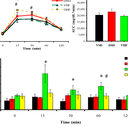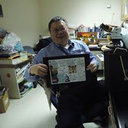Outcome of early-treated type III Gaucher disease patients.
Palabras clave
Abstracto
Recombinant human acid β-glucosidase GBA (rhGBA) infusion is an effective therapy for non-neuropathic (type I) Gaucher disease (GD), but its effect on subacute neuropathic (type III) GD is still controversial. The most common genotype for type III GD is homozygous c.1448T>C (p.L444P) mutation, and in this study, we treated seven such patients starting from an early age (median 2.1 years; range 1-2.9 years). Before the start of treatment, all patients presented hepatosplenomegaly, anemia, and thrombocytopenia, but with no neurological signs. Normalization of hemoglobin levels and platelet numbers was achieved in all patients in one year. However, after a median treatment period of 7.6 years (2.2-12.0 years), two patients developed horizontal gaze palsy, one had seizures, four demonstrated mental retardation, and five showed kyphosis. Moreover, lymphadenopathy in the neck, thorax, or abdomen was observed in four patients. Therefore, the progression of neurological symptoms in these patients probably reflected the neurologic natural history of type III GD. Residual somatic symptoms, including kyphosis and lymphadenopathy, may be more common than what we thought. An additional treatment will be necessary to improve the outcome of type III GD.



